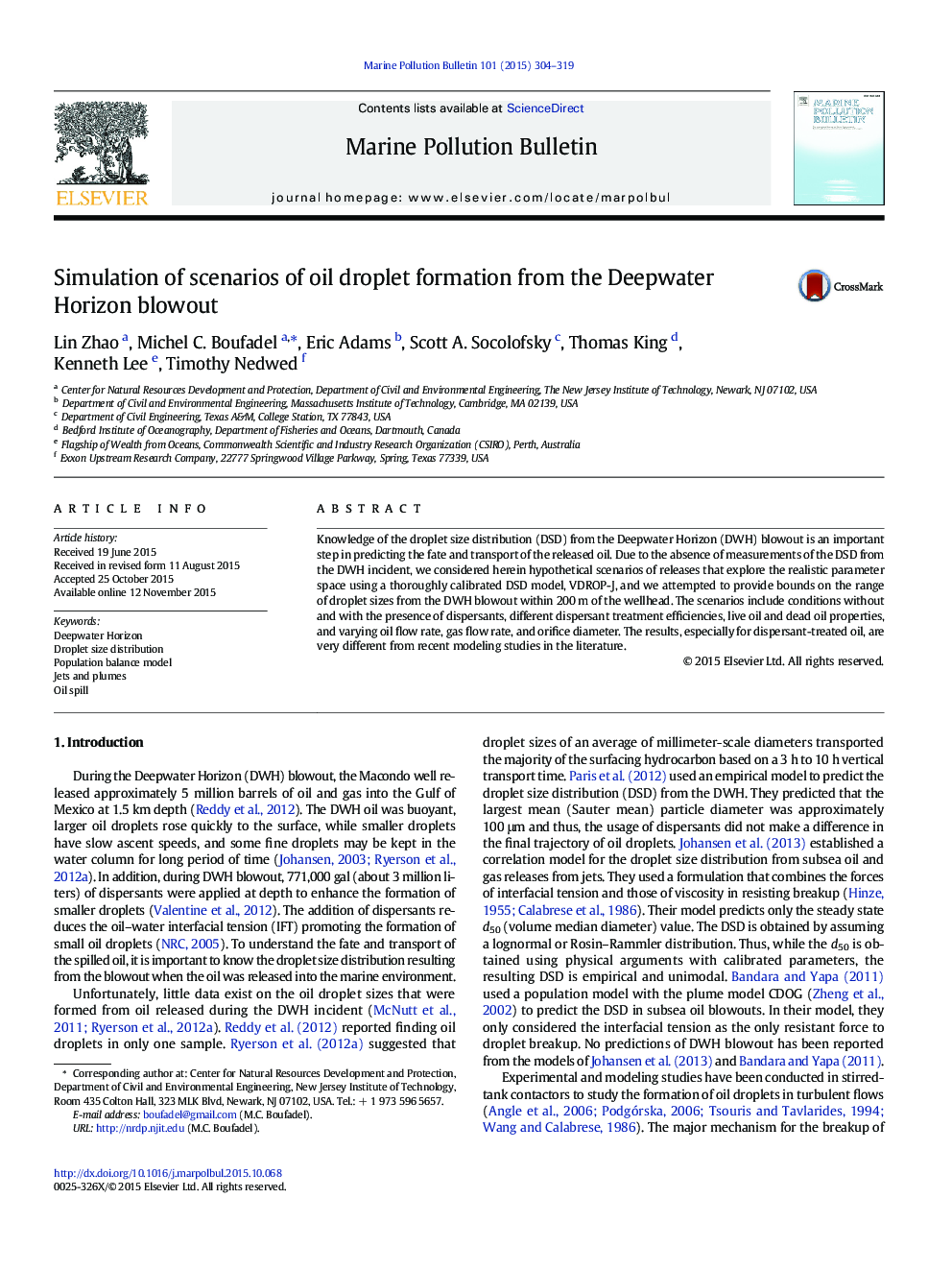| Article ID | Journal | Published Year | Pages | File Type |
|---|---|---|---|---|
| 4476616 | Marine Pollution Bulletin | 2015 | 16 Pages |
•Prediction of oil droplet formation from Deepwater Horizon blowout by VDROP-J model•Hypothetical scenarios to provide bounds on the range of droplets sizes from DWH•Variation of discharge conditions, live and dead oil properties, w/no dispersants•Different droplet size distribution than recent modeling studies in the literature
Knowledge of the droplet size distribution (DSD) from the Deepwater Horizon (DWH) blowout is an important step in predicting the fate and transport of the released oil. Due to the absence of measurements of the DSD from the DWH incident, we considered herein hypothetical scenarios of releases that explore the realistic parameter space using a thoroughly calibrated DSD model, VDROP-J, and we attempted to provide bounds on the range of droplet sizes from the DWH blowout within 200 m of the wellhead. The scenarios include conditions without and with the presence of dispersants, different dispersant treatment efficiencies, live oil and dead oil properties, and varying oil flow rate, gas flow rate, and orifice diameter. The results, especially for dispersant-treated oil, are very different from recent modeling studies in the literature.
